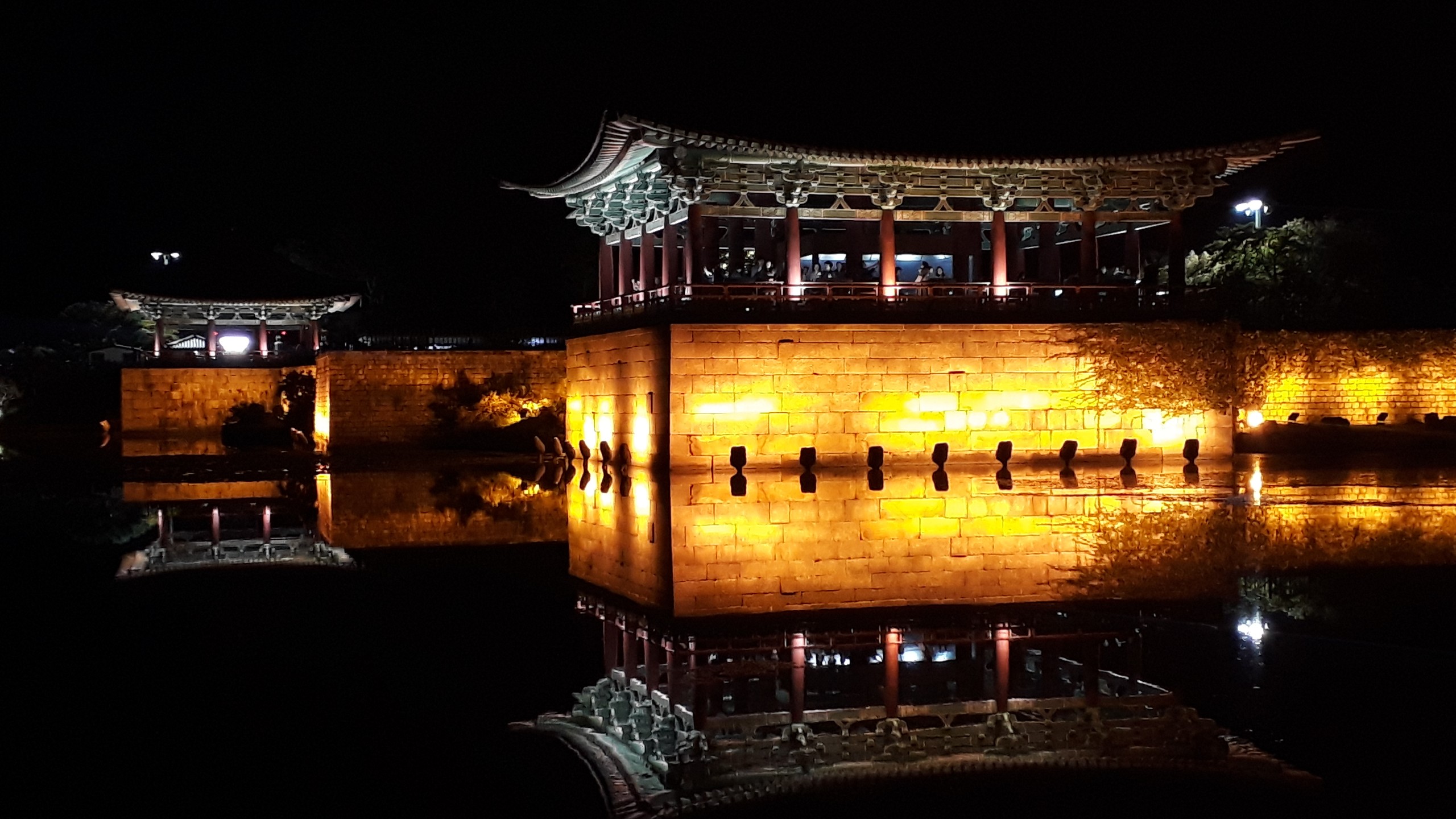
DAY 4
(Reading time: 4 minutes)
After breakfast we moved to the train station to leave Seoul and head to Gyeongju, a city in the south-east of South Korea. Before Seoul became the capital, it was Gyeongju that boasted this status. That was during the reign of the kingdom called Unified Silla (around the 7th-10th century). Today, it’s home to preserved remnants of the once mighty and prosperous empire.
We traveled to Gyeongju by high-speed KTX train (Korean Train Express). On some routes, these trains can reach speeds of around 300 km/h.

Korean landscape looks really beautiful from train, green and mountainous, but because of those mountains, we kept passing through tunnels, so I was only waiting for the light at the end of those tunnels.
Although Gyeongju is reportedly a popular tourist destination, it was clear from the hotel check-in that the wolf had promised. And in the city streets, it was the same story. Quiet, empty, closed. And we were hungry. We walked several streets and got the impression that either there’s a sort of southern siesta going on here, or there’s no reason to open restaurants and shops when there’s not a soul around. But eventually, we succeeded; we found a small inconspicuous restaurant (that’s probably a strong word) where an elderly couple ran their business. Granny cooked, grandpa served. They had only a few dishes on the menu, mostly home-style, no English translations, and of course, neither of them spoke English, but ordering food only requires a picture and two fingers. We had jjajangmyeon, noodles with black bean paste.

Jjajangmyeon is my favorite dish, I even cook it at home and we never get enough of it. It’s made with aforementioned black bean paste mixed with diced pork and chopped cabbage. Typically, you pour this sauce over noodles (jjajangmyeon – “myeon” = noodles) or rice (jjajangbap – “bap” = rice). The dish has a very distinct salty taste, like eating thick soy sauce, and while it may be unusual (especially to look at), it’s very addictive.
After lunch, we visited tombs of the kings from the Silla period – grassy mounds mostly located in Daereungwon Park in the city center.
In the park, you can walk along paths around the tombs; some of them are open for entry, but climbing on them is prohibited (nobody walks on their ancestors’ graves in our country either). Beyond the wall, you’ll see Hwangnidan-gil, a shopping street in traditional style, and a little further is Gyochon Village – a small area with typical Korean houses called “hanok.”

In the evening, we visited beautifully illuminated Donggung Palace, a former residence of the crown prince of Silla and a venue for celebrations. Its splendor reflects in artificially constructed Wolji Lake (formerly known as Anapji).

A rarity in Gyeongju is Cheomseongdae astronomical observatory.

At first glance, it looks like some kind of failed shooting range or stone oven, but it’s actually the oldest surviving observatory in Asia, possibly even in the world. It was built from 365 stones, representing the number of days in a year, in 27 layers according to the 27th ruler of Silla, Queen Seondeok.
Gyeongju is called an open-air museum and it lives up to its nickname. The thousand-year-old city carefully preserves the past glory of great rulers.
-endy-
DONKEY’S SPECIAL:
-mj-